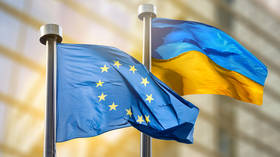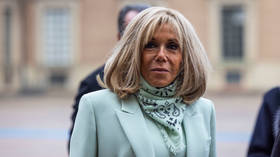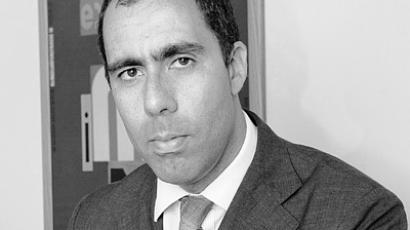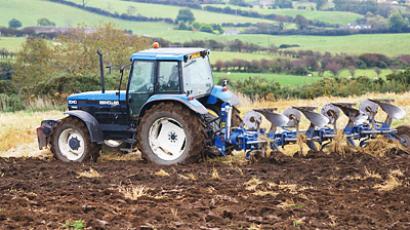Food for thought on Russian inflation
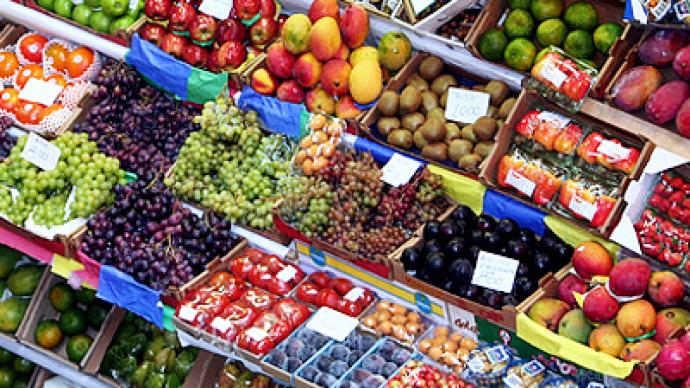
Despite mounting concerns about potential food price inflation battering the global economy over the coming year, Russian market analysts have told RT, Business they expect the country to avoid sharp price fluctuations in 2011.
The most recent Food Outlook report from the UN Food and Agricultural Organization has warned of possible 11-20% prices rises in national food import bills, pushing them to their highest since 2008, a year which saw food riots in some nations.The organization says crop failures, floods and extreme weather conditions will undermine global production in key crops which could flow through to other foodstuffs including milk and meat. Wheat and maize prices have jumped by as much as 40% in the recent months, with global sugar prices also sharply higher.
Grain Market: Intervention Fund the SaviorIn the wake of the summer drought which has slashed grain output forecasts, and led to a temporary ban on grain exports, Russia is currently expecting to harvest 60.5 million tonnes of grain.That leaves a significant shortfall in meeting domestic demand but Alexandre Korbut, Vice President at Russia’s Grain Union says access to the grain intervention reserves will help minimize price hikes and the potential for shortages.“Certainly, the drought in summer 2010 damaged the crop in Russia, with 61 million tons of grain instead of the average 97 tons, while the average annual consumption is at 71 million tons. But this volume coupled with additional stock of 26 million tones fully covers domestic needs, which means that we don’t expect any significant price hikes this year. There are local problems in Russia’s Primorsky Krai, Central Federal District and the Black Earth Belt, including a lack of fodder for the livestock sector. However, Russia’s Government is trying to settle the problem, having introduced subsidies for railway transportation from Russia’s Siberia and Southern regions to those damaged by the drought.”Korbut says that how the government manages the grain intervention fund will determine how sharply price rise when current supplies run low early in the new year.“Grain prices will largely depend on the Governmental policy. I think, the prices will grow in January – February next year, when the drought affected regions run out of supply. After that I expect Russia’s Government to step into the market with the grain from its intervention fund, stabilizing prices.”Speaking in Mid November,First Deputy Prime Minister, Viktor Zubkov, said that the government would look to use the grain intervention fund when prices rise to 7 – 8 thousand roubles per tonne, adding that there is no immediate need.He says that Russia’s grain and fodder needs can be met into the foreseeable future when the 21.7 million tonnes of carry-over stocks and 9.5 million tonnes of grain in the intervention fund are taken into consideration.Meat market: A change in consumptionTotal Russian meat production is expected to rise by 640 thousand tones to 10.6 million tones in 2010, after rising by 7% over the first three quarters, with poultry production up 13% to 465 thousand tones, and pig production up 8% to 3.1 million tonnes.President of Russia’s meat Union, Musheg Lorisovich Mamikonyan, says that the impact of a reduced grain will have a significant impact on cattle numbers, and feed prices, but adds that this will not translate into across the board price rises. “Russia’s drought this summer did affect the cattle market, which will certainly feed into the price of some types of meat. Those segments, where the profitability is high enough, won’t see a major price rise. Those, where supply surpasses demand, won’t either. One example is the market of poultry meat, where supply remains high enough, even despite halving in the last 7 years.I expect that in 2011 the price rise in this segment will be below the inflation rate. This is really good for the Russian consumer, as the poultry market accounts for about 40% of the total meat market volume, and it’s quite cheap.”Mamikonyan did, however, sound a note of warning about beef prices, with Russia as a major beef importer at the mercy of global prices, and that this would play into domestic lamb and poultry demand.“The beef market is in a more complicated situation, as it’s highly dependent on imports, with world prices constantly increasing. This is mainly due to the reduction of pasture fields around the world, and growing demand. So, next year the beef price is forecast to go up by about 7%, which is approximately the inflation level. But Russian consumers have a good alternative for red meat – lamb and pork, which is in sufficient stock in our country. So, I think, producers should focus on increasing production of the two meat types and couple that with good marketing.”Milk Market: Easing backThe summer 2010 drought also provides the backdrop to the Russian dairy sector, with demand up 12% year on year, as people started to consume more milk for health concerns, and supply down, as fodder was damaged. Despite this, officials in Russia say the country’s market won’t see any sharp price rise in 2011.According to Andrey Danilenko, a head of board at the National Union of Milk Producers (Soyuzmoloko), the primary cost of milk in Russia will grow an average 10-15% in 2010, which is in line with the global trend. However, Danilenko added that some Russian regions varied significantly depending on how significant was the drought damage.He believes total 2010 production will fall 1 – 1.5% year on year.Evgeny Smirnov, an analyst at Russia’s Milk Union, added that the price rise also depended on the type of a dairy product, as raw milk skyrocketed in 10 months of 2010.“We expect the prices for dairy products to grow another 2% in the remaining month of 2010, which will add to about 16% year on year price rise as of the end of October. Raw milk was much higher as of the same date, rising 64% year on year, and as you see there is no a strong correlation between the price of raw stores and the final price of products on shelves. These are the contracts between a processor and a trade company that stipulates a particular selling price, which is also limited by consumer demand.Anyway, the price for dairy products that require more raw milk, such as cheese and butter, will rise faster than for locally produced liquid milk, yoghurts, and sour cream, for example.”Danilenko estimated wholesale prices growth in 2010 at 30% at the minimum, which is a move up from record low levels of 2009. Retail prices for dairy products were 10-15% up in 2010, Danilenko added. He added that, barring further climactic issues or a major inflation shock globally, retail milk and dairy product prices won’t rise more than inflation.Smirnov also expectedprices to go down in2011, as consumers are no longer increasing their spending on dairy products.“I think, that next year the situation will start stabilizing, with prices going back down to the pre – boom period. A market price is always limited by consumer demand and solvency and now this price has reached its peak, where people can’t spend any more on dairy products – sales volume of some dairy items has already stopped it growth”.Sugar: At the mercy of global supply Major concern surrounds the global sugar market with prices reaching 30 year highs in recent months, on the back of a global sugar shortfall, and concerns that major producers may limit exports.Evgeny Ivanov, a sugar market analyst at Russia’s Institute for Agriculture Market Environment, says he believes prices are unlikely to spike sharply in coming months, but warning that global market volatility makes reading the market tough.“In fact, today nobody can tell for sure what will be the dynamics of the sugar price in Russia in the near future, as it depends on quite volatile things – oil, raw sugar or US dollar, for example. However, I don’t expect the sugar price to rise sharply in 2011. Of course, the global concerns of sugar prices jumping, with South Brazil, the main world exporter of sugar, suffering huge losses this year, will affect Russia as well. Indeed, our country depends on imports about 50%, with domestic annual consumption being at 5.6 million tons and Russia’s domestic production in the reporting period from August to February expected to be just at 2.6 million tons. South Brazil usually offers its sugar supplies to world markets in April – November, which means during December2010 – April 2011 the world stock will be at its minimum and the supply is very unstable. Anyway, I think, the sugar price might go up 5-8 % within coming months at the maximum, provided the world price remains the same.”
Business RT: Anastasia Kostomarova






